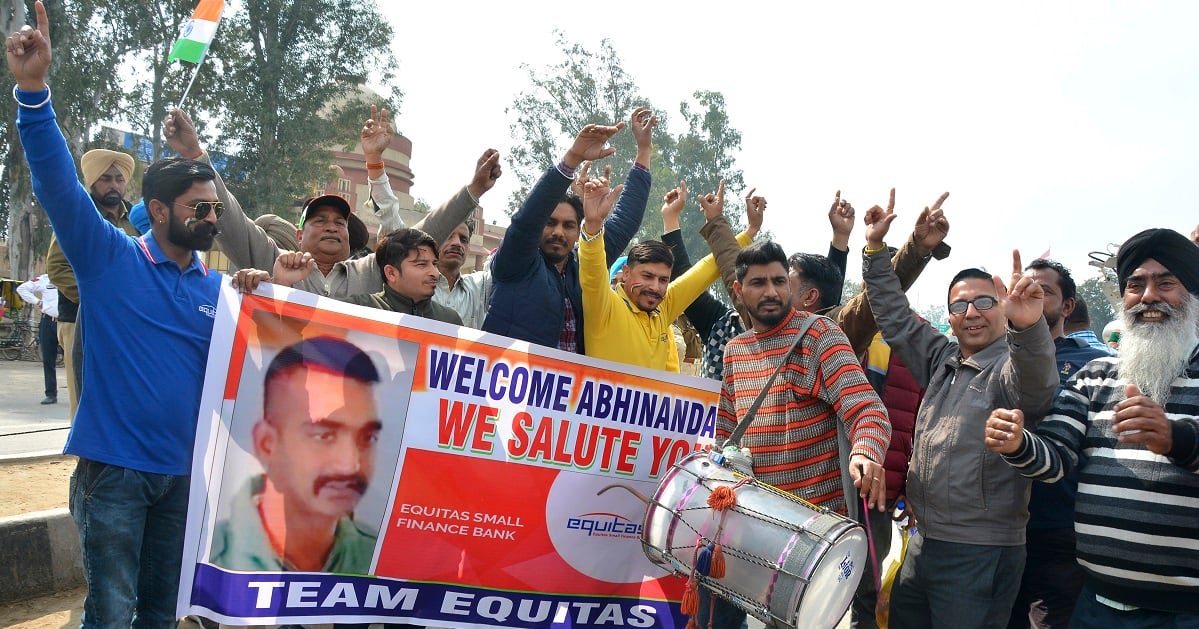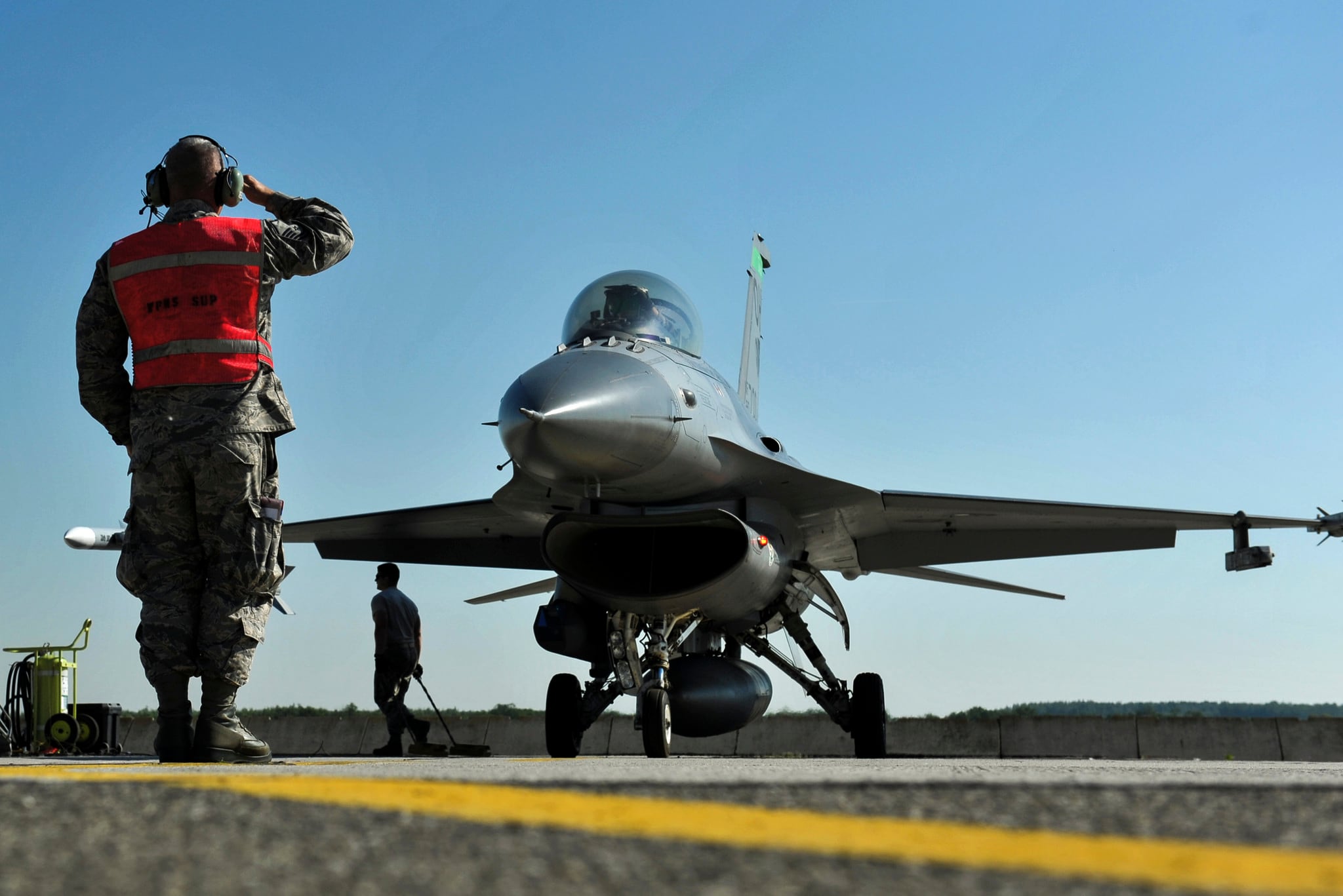Mustache March is here again, and many airmen are once again growing soup-strainers in the tradition that started as a tribute to legendary fighter pilot Brig. Gen. Robin Olds.
Aviano Air Base in Italy, for example, offered to take before-and-after photos of airmen who grow their mustaches out this month. (As long as it’s within regulations, Aviano added, because nothing says fun like “within regulations.”)
And the craze appears to be spreading around the world. Indian pilot Wing Commander Abhinandan Varthaman, who was recently shot down and captured by Pakistan before being released Feb. 27, is being celebrated there as a national hero. And his perfectly groomed, gunslinger-esque Tamil mustache is now all the rage in India, sparking Internet memes and inspiring men across the country to adopt similar distinctive facial hair.

In honor of mustachioed, unflappable pilots everywhere, Air Force Times is reposting this story on Robin Olds’ legacy, originally published on March 5, 2014.
Brig. Gen. Robin Olds’ legacy runs far deeper than a mustache.
He was no less than one of the greatest fighter pilots in U.S. history — a triple ace who scored at least 17 victories in World War II and the Vietnam War. He led possibly the most daring and successful air missions in Vietnam. He was beloved by his men and pushed for changes in how the U.S. conducts air warfare.
And to top it all off, he married a bombshell movie star, Ella Raines.
In a 2011 profile, 7th Air Force historian Howard Halvorsen called Olds “the greatest aerial warrior and leader in American history. It is as if he was made to be the perfect airman.”
According to Halvorsen, Olds' father was an Army Air Corps captain who was aide to Army Gen. Billy Mitchell, known as the father of the Air Force. Growing up, Olds heard his father and family friends — famous early aviators such as Hap Arnold, Carl Spaatz and Eddie Rickenbacker — discuss how air power could help avoid the stalemate and horrific trench warfare of World War I.
RELATED

Olds helped put their ideas into action when he entered World War II in 1944, shooting down his first five enemy planes and becoming an ace in his first two missions in the cockpit of his P-38J Lightning. He was promoted to major and given command of the 434th Fighter Squadron — all before he turned 23. By the time his tour in Europe ended, he had shot down a total of 13 German planes.
The National Museum of the Air Force said Olds returned to war two decades later during Vietnam. Olds, by then a colonel, was put in charge of the 8th Tactical Fighter Wing — dubbed the Wolfpack — at Ubon Royal Thai Air Force Base. This set the stage for what may have been Olds' finest hour: Operation Bolo.

For that mission, Olds and the wing's tactics officer, Capt. John Stone, came up with an ingenious plan to spring a trap on the North Vietnamese's force of MiG-21s in January 1967. With Olds at the lead, his wing's F-4s flew into North Vietnam from the west, using the exact route, altitude and formation a fleet of F-105 bombers would on a bombing run. The North Vietnamese took the bait — they launched their MiGs to intercept the presumed bombing run, only to run into the Wolfpack. Another group of F-4s from the 366th Tactical Fighter Wing closed the trap by entering from the east, to block the MiGs from escaping to China and to prevent them from landing. The Air Force shot down seven MiGs that day, including one shot down by Olds, without losing a single plane.
That August, Olds led a strike force of eight F-4C aircraft against the key Paul Doumer Bridge on Hanoi’s Red River. Olds and his men flew through intense fire, surface-to-air missiles and MiG attacks to destroy the bridge. He earned the Air Force Cross for that mission. He also earned a Distinguished Service Medal with a bronze oak leaf cluster, a Silver Star with three bronze oak leaf clusters, the Legion of Merit, and the Distinguished Flying Cross with a silver oak leaf cluster.
Olds is credited with shooting down four MiGs in Vietnam, but Halvorsen believes he actually shot down more.
"He had been told if he became an ace he would lose his command, because his capture would be a public relations coup," Halvorsen wrote. "He was also told he could only fly 100 missions in the Vietnam War. We now know his final mission was his 152nd, and as much as we know about the man, we can safely say he did not only kill four MiGs. Olds was almost certainly an ace in Vietnam, but being an ace mattered far less than leading his men and getting them home safely."
Olds was central to the creation of the Red River Valley Fighter Pilots Association, which improved coordination among Air Force wings in Southeast Asia, according to The National Museum of the Air Force.
Halvorsen said Olds “was so persistent during all of those inter-war years, constantly asking for better planes and better training, when it would have been better for his career if he had toed the line more often. Vietnam proved him correct, and the Air Force finally came to his way of thinking.”
Olds is credited with starting the tradition of Mustache March when he grew his "bulletproof" mustache in March 1965, inspiring others to follow his example.
"Generals visiting Vietnam would kind of laugh at the mustache," Halvorsen quotes Olds as saying. "I was far away from home. It was a gesture of defiance. The kids on base loved it. Most everybody grew a mustache."
Olds' airmen may have gotten a kick out of it, but former Air Force Chief of Staff Gen. John McConnell did not. When Olds returned home and had his first interview with McConnell, Olds said, "he walked up to me, stuck a finger under my nose and said, 'Take it off!' And I said, 'Yes, sir!' And that was the end of that."
But the legend didn't die. Airmen continued growing mustaches of varying degrees of regulation compliance. And when Olds was promoted to brigadier general and named commandant of cadets at the Air Force Academy in 1968, his new cadets gave him an appropriate welcome.
"I chuckled as we entered Mitchell Hall between rows of cadets at attention wearing fake mustaches," Olds wrote of his first day at the academy in his posthumously-published memoir, "Fighter Pilot." "I stared fiercely into the eyes of several cadets. These guys were already my kids."
Olds then profanely challenged the cadets to beat Army in the next day’s homecoming game, he wrote, “and I gave the whole group a quick one-finger salute. That brought down the house. ... Over the years, people asked me why I did it. Hell, it just seemed like the right thing to do at the time. I was a fighter pilot; they’d better get used to it.”
Stephen Losey is the air warfare reporter for Defense News. He previously covered leadership and personnel issues at Air Force Times, and the Pentagon, special operations and air warfare at Military.com. He has traveled to the Middle East to cover U.S. Air Force operations.




